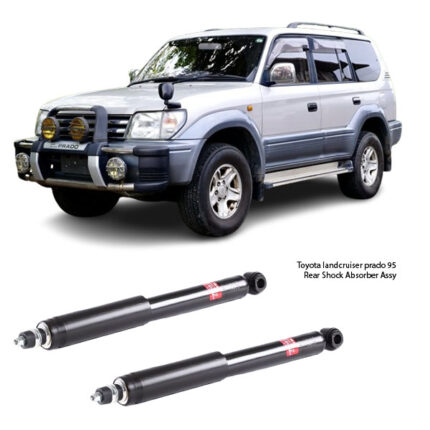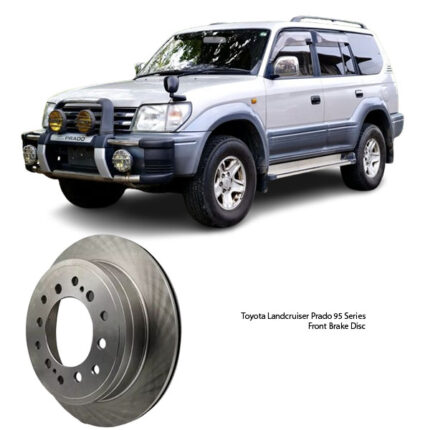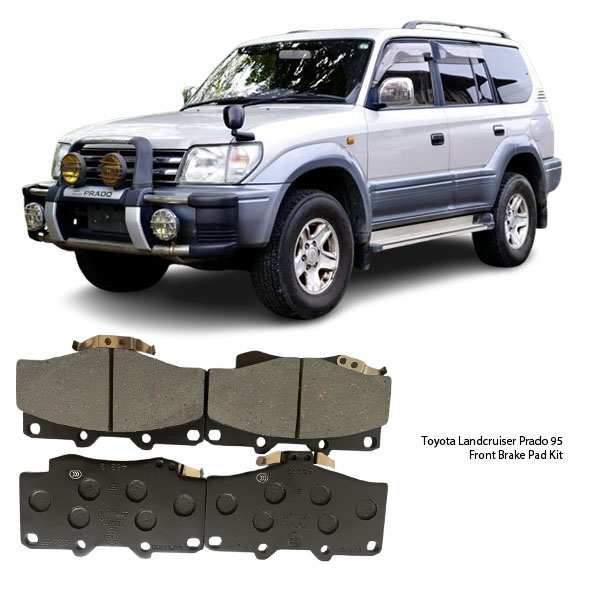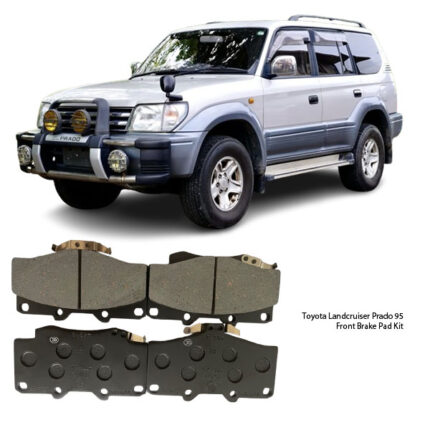Get Toyota Landcruiser Prado 95 Front Brake Pad Kit 04465-YZZ57 in Kenya
When it comes to vehicle safety, nothing matters more than the ability to stop—quickly, smoothly, and reliably. Your front brakes are responsible for handling the majority of braking force during driving, which makes the Front Brake Pad Kit a crucial component in your vehicle’s overall safety system.
A high-quality front brake pad kit is engineered for more than just performance—it’s built to ensure driver confidence, passenger safety, and vehicle control in every road condition. Whether you’re navigating urban traffic, coasting on the highway, or braking in an emergency, your front brake pads are always at work.
Let’s explore in detail how the Front Brake Pad Kit works, what it includes, and why it’s one of the most important maintenance parts you’ll ever replace.
What Is a Front Brake Pad Kit?
The front brake pad kit contains the brake pads used in the front axle’s disc braking system. These pads are designed to press against the rotors (also called brake discs) when the brakes are applied, generating friction to slow or stop the vehicle.
Since front brakes carry about 60–70% of the braking load, front brake pads experience more wear and heat than rear pads. The kit often includes:
-
A pair of front brake pads (inner and outer pads per wheel)
-
Anti-rattle shims or noise reduction plates
-
Wear indicators (mechanical or electronic)
-
Brake grease or lubricant (in premium kits)
-
Installation hardware such as clips or pins
How It Works
When you press the brake pedal:
-
Brake fluid travels from the master cylinder to the front brake calipers.
-
Hydraulic pressure pushes the pistons in the calipers.
-
The pistons press the brake pads against the rotating brake discs (rotors).
-
The resulting friction slows the wheels and brings the vehicle to a stop.
Brake pads must create consistent friction while withstanding extreme heat, pressure, and environmental conditions—all while maintaining a smooth, quiet operation.
Construction & Materials
Brake pads are made of multiple layers, each designed for a specific function:
1. Friction Material
The working surface of the pad, made from:
-
Semi-metallic: Strong, heat-tolerant, and affordable
-
Ceramic: Low dust, quiet, long lifespan, excellent performance
-
Organic (NAO): Softer, quieter, but with slightly less durability
-
Low-metallic: Balanced mix of metal and organic for better heat dissipation
2. Backing Plate
Steel plate that provides structure and support for the pad material. Transfers pressure from the caliper piston to the friction surface.
3. Shim or Insulator
Attached to the back of the pad to reduce noise, vibration, and harshness (NVH). High-end pads have multi-layer shims for better acoustic control.
4. Adhesives & Bonding Agents
Hold the friction material securely to the backing plate, even under high temperatures.
Why Front Brake Pads Matter
Safety First
Reliable brake pads ensure consistent stopping distances. In emergencies, quality pads can mean the difference between stopping in time and a collision.
Braking Balance
Since front brakes handle more weight transfer during braking, worn front pads can lead to brake imbalance, pulling, or poor stopping performance.
Protects Rotors
High-grade pads reduce wear on brake discs, lowering the risk of costly rotor damage or warping.
Low Emissions & Dust
Modern ceramic and NAO materials reduce brake dust and contribute to cleaner operation, helping maintain wheels and protect the environment.
When to Replace Front Brake Pads
Brake pads are a wear item, meaning they wear down with use and must be replaced periodically. Signs it’s time to replace your front brake pads include:
-
Squeaking, squealing, or grinding noises
-
Reduced braking responsiveness
-
Increased stopping distance
-
Brake pedal vibration or pulsation
-
Brake warning light on the dashboard
-
Pad thickness below 3–4 mm during inspection
Generally, front brake pads last between 30,000 to 70,000 km, depending on driving style, terrain, and brake pad quality.
Installation Tips
Replacing your front brake pads is a task that requires precision. Here’s a quick overview:
-
Lift and secure the vehicle on jack stands.
-
Remove the front wheels for access to the brake calipers.
-
Unbolt the caliper and remove the old pads.
-
Inspect the rotors for wear or scoring.
-
Clean and lubricate contact points with brake grease.
-
Install new pads, shims, and hardware.
-
Reassemble the caliper and test for smooth movement.
-
Pump the brake pedal to seat the pads.
-
Test drive the vehicle for proper operation.
After installation, it’s recommended to bed-in the new brake pads—a controlled process of applying the brakes multiple times to allow the pads to transfer a thin film onto the rotors, ensuring maximum performance and noise-free operation.
Technical Specifications (Example)
| Feature | Specification |
|---|---|
| Pad Material | Ceramic / Semi-metallic / NAO |
| Position | Front axle |
| Backing Plate | Steel with anti-rust coating |
| Noise Control | Multi-layer shim / anti-rattle clips |
| Heat Resistance | Up to 600°C (depending on material) |
| Dust Output | Low (for ceramic and NAO) |
| Sensor Compatibility | Mechanical or electronic wear indicators |
Designed for All Conditions
-
Urban driving: Frequent stops require fade-resistant pads.
-
Highway driving: Demands consistent high-speed performance.
-
Mountainous terrain: Needs heat-resilient pads for steep descents.
-
Wet weather: Pads must retain grip and resist hydroplaning.
A premium Front Brake Pad Kit is built to perform reliably under all these conditions.
Kit Inclusions
A complete front brake pad kit typically includes:
-
4x brake pads (2 inner, 2 outer)
-
Anti-rattle clips
-
Wear indicators (if applicable)
-
Shims or backing plates
-
Brake grease (in select kits)
This ensures a complete and hassle-free replacement, maintaining the integrity of your braking system.
Why Choose a Quality Front Brake Pad Kit?
Your brakes are your last line of defense on the road. Choosing a high-quality brake pad kit ensures:
-
Better performance
-
Lower noise and dust
-
Reduced rotor wear
-
Longer service life
-
Greater safety and peace of mind
Cutting corners with cheap, low-quality pads may save money initially—but can lead to reduced performance, more frequent replacements, and safety risks.
Conclusion: Brake Smarter, Not Harder
The Front Brake Pad Kit is more than just a replacement part—it’s an investment in your vehicle’s safety, performance, and longevity. With reliable materials, thoughtful engineering, and a commitment to excellence, a quality brake pad kit delivers what every driver needs: confidence behind the wheel.
Keep your braking system in top form—choose the right front brake pads, replace them regularly, and enjoy smoother, safer, and more efficient driving every time you hit the road.
Follow us on Facebook for more parts.




